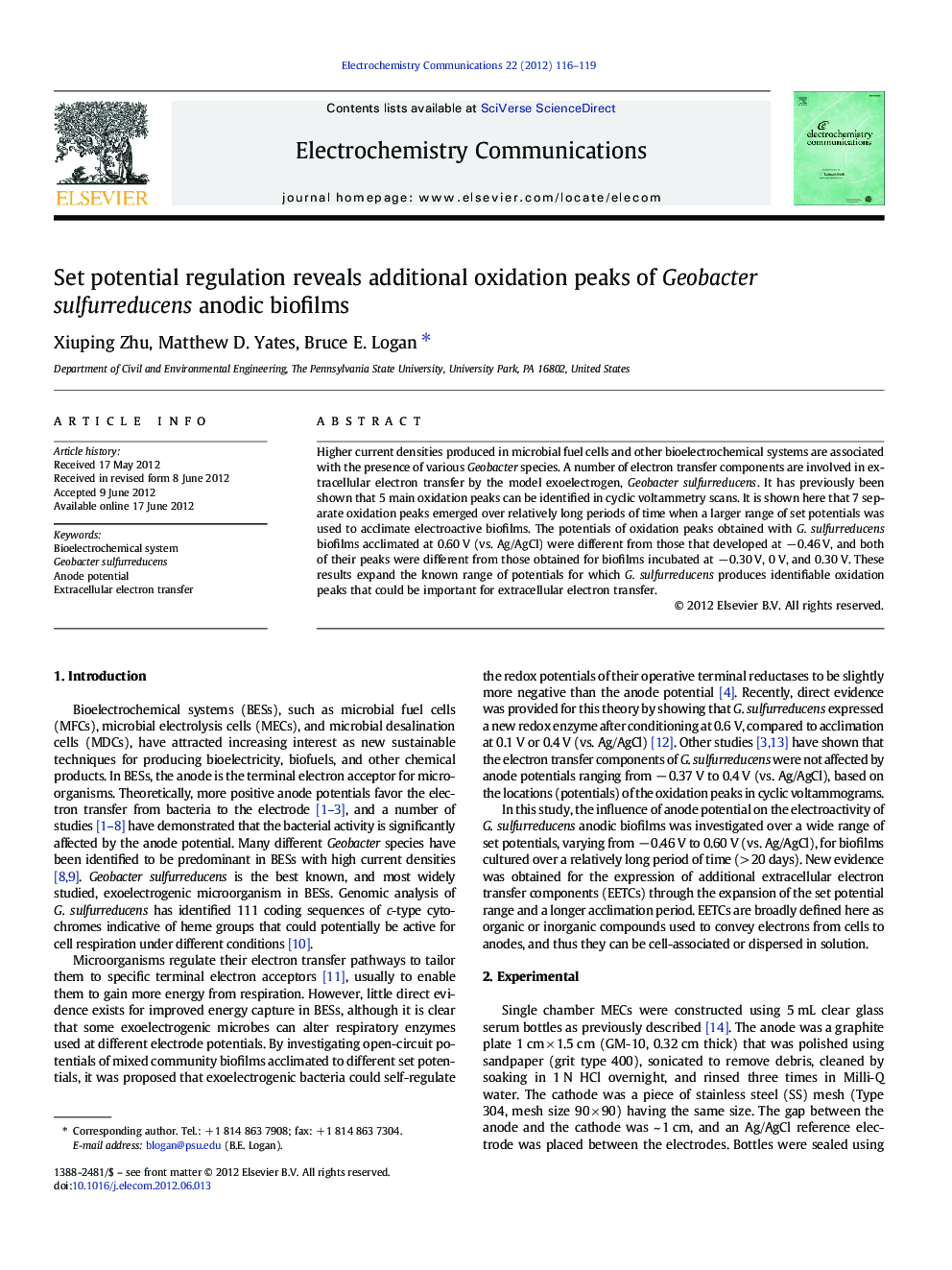| Article ID | Journal | Published Year | Pages | File Type |
|---|---|---|---|---|
| 179670 | Electrochemistry Communications | 2012 | 4 Pages |
Higher current densities produced in microbial fuel cells and other bioelectrochemical systems are associated with the presence of various Geobacter species. A number of electron transfer components are involved in extracellular electron transfer by the model exoelectrogen, Geobacter sulfurreducens. It has previously been shown that 5 main oxidation peaks can be identified in cyclic voltammetry scans. It is shown here that 7 separate oxidation peaks emerged over relatively long periods of time when a larger range of set potentials was used to acclimate electroactive biofilms. The potentials of oxidation peaks obtained with G. sulfurreducens biofilms acclimated at 0.60 V (vs. Ag/AgCl) were different from those that developed at − 0.46 V, and both of their peaks were different from those obtained for biofilms incubated at − 0.30 V, 0 V, and 0.30 V. These results expand the known range of potentials for which G. sulfurreducens produces identifiable oxidation peaks that could be important for extracellular electron transfer.
► Geobacter sulfurreducens produces high current densities in microbial fuel cells. ► Only a few components of this microbe's respiratory chain have been identified. ► Using cyclic voltammetry, we show the presence of up to 7 redox peaks. ► These findings expand the number of possible respiratory components for this microbe.
